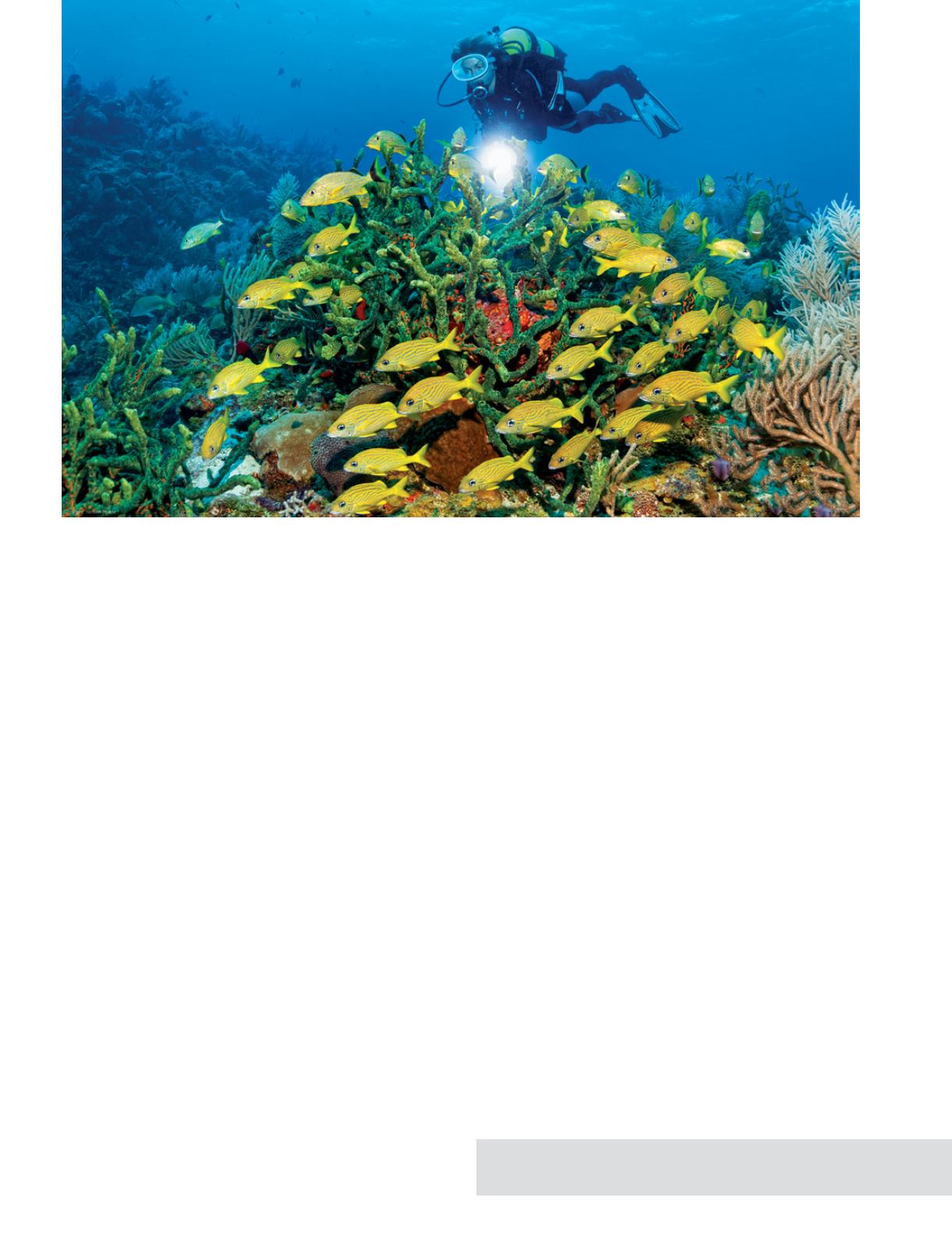
106
|
fall 2013
Learn more about traveling from the U.S. to Cuba legally at
lawg.org/component/content/article/77/884.
The Gardens of the Queen, an archipelago on the island’s
south side, is one of Cuba’s most renowned dive locations.
To date, protecting its pristine coral reefs has been a priority,
and diving has benefitted local communities while the reefs
have remained healthy. But Cuba is expanding tourism here,
and scientists are concerned the Gardens will become one of
the first places overburdened by tourism. “The demand could
just overwhelm the infrastructure,” Whittle said, “and as Cuba
races to accommodate that demand they may mess it up.”
Cuba’s economic growth is also fueling increased oil
and gas development. This poses a major potential threat
to the marine environment in the form of infrastructure
development and in the possibility of a spill, Whittle
added. More prosperity could also change Cuba’s system
of agriculture. Increased use of pesticides and fertilizers
will mean more land-based runoff and consequent
eutrophication, to the detriment of the marine environment.
Strategically Situated
Cuba occupies the junction of the Atlantic Ocean, Caribbean
Sea and Gulf of Mexico — essentially one large, interconnected
marine environment, and one that relies heavily on Cuba’s
healthy ecosystems. “Lobster larvae, larval reef fish and coral
spawn all travel by ocean currents from productive Cuban
reefs throughout the system,” said Bretos, who was involved in
a 1991 study that released 1,900 floating bottles on the south
side of Cuba. One of them traveled to West Palm Beach in just
46 days. “If Cuban reefs go downhill, it will affect us all.”
Scientists and conservationists began working years ago
to keep that from happening. Scientists from the U.S., Cuba
and Mexico formalized this work in 2007, forming the
Trinational Initiative for Marine Science and Conservation,
an ambitious research effort with the ultimate goal of
establishing a multinational, coordinated approach to
managing and protecting this shared marine environment.
The Environmental Defense Fund, the Ocean Foundation,
the Nature Conservancy and Mote Marine Laboratory are
just a few of the players that are already involved.
Back at Maria la Gorda, we enjoyed spectacular visibility,
balmy water temperatures and thriving reefs in depths from
15 to 100 feet. Sandy valleys and seagrass beds lay between
them, and every dive site swarmed with marine life. This
is one of more than 100 marine protected areas (MPAs)
proposed or in place in Cuba — the largest network in the
Caribbean. But here, as elsewhere, MPAs suffer from lack
of awareness and enforcement. The crew tossed cigarette
butts from the dive boat, and I spotted a fishing vessel on the
horizon that was clearly in protected waters. Still, it’s a start.
“This is a unique time in the history of Cuba and in U.S.-
Cuban relations,” Whittle said. “There is real desire in both
countries to make Cuba a model for sustainability and biodiversity
conservation and for innovative and effective fisheries and
marine management. That will benefit not just the resources
but the people of Cuba as well. I think we can show that you
can have a healthy economy and a healthy environment.”
“What many will tell you is that Cuba is the linchpin, given its
size, location, diversity,” he added. “It’s key to a healthy Caribbean,
Gulf and Atlantic. People go dive there and come back raving;
they had no idea such amazing coral reefs were so close.” The
challenge is to do all we can to keep them amazing.
AD
Schooling grunts swarm around a sponge
formation in the Gardens of the Queen.


